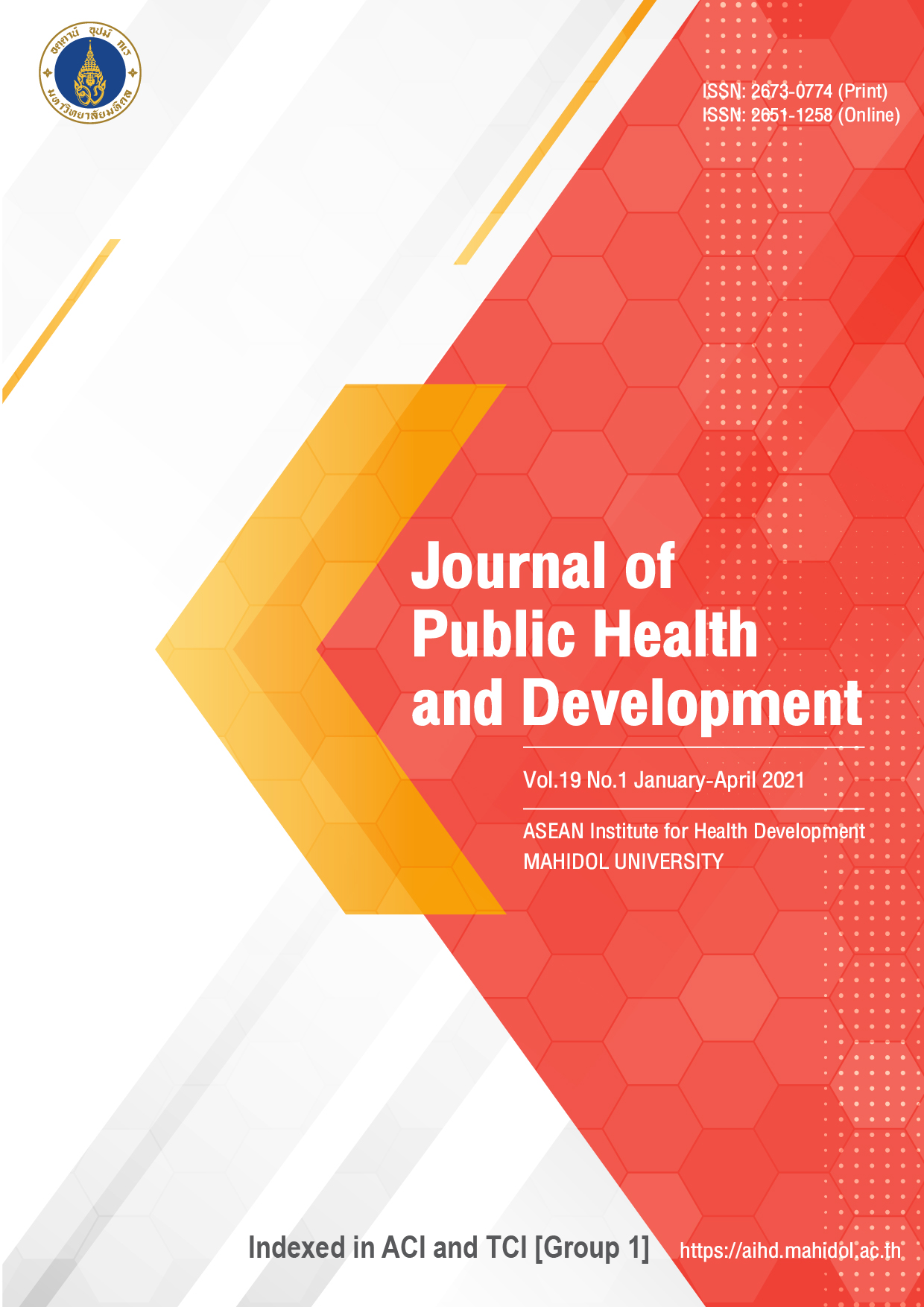Development of indicator of the personal initiative behavior of head nurses at private hospitals in Thailand
Main Article Content
Abstract
Personal initiative behavior of head nurses at private hospitals in Thailand is an essential tool for highly efficient performance at the individual and organizational levels, leading to competitive advantage. This study aimed to develop indicators of Personal Initiative Behavior (PIB) for head nurses in private hospitals in Thailand. This study used a quantitative research to develop the PIB scale based on the personal initiative concept of Frese and Fay (2001). The samples were head nurses who worked in private hospitals accredited with international quality standards in Thailand. This study used 7 steps of Brislin’s method for scale development. The content validity was tested by 7 experts in the nursing management field with a CVI at 1.0. The internal consistency reliability with Cronbach’s alpha coefficient for Personal initiative components; self-starting, pro-active and persistent were .73, .78 and .80, respectively. Overall reliability was .08, and testing of the construct validity was performed by using exploratory factor analysis and confirmatory factor analysis with 200 head nurses at private hospitals. The PIB consisted of three components with nine indicators: 1) Self-starting behavior composed of 3 indicators (factor loading = .88), 2) Pro-active behavior composed of 3 indicators (factor loading = .92), and 3) Persistent behavior composed of 3 indicators (factor loading = .83). The developed instrument was congruent with empirical data (P-value = .893, chi square = 15.8, df= 24, 2 /df = .660, GFI = .983, AGFI = .968, RMR = .011, RMSEA = .000, CFI = 1.000). Cronbach’s alpha coefficient for reliability after construct validity for overall reliability was .80. The developed indicators can be used to measure the level of personal initiative behavior of head nurses in private hospitals particularly in the areas of self-starting behavior, pro-active behavior and persistent behavior, by having a good knowledge of innovation management and creativity.
Article Details
References
Tongmuangtunyatep K., Kunaviktikul W., Nantsupawat R., Akkadechanunt T. Development of a competency assessment scale for head nurses in community hospitals. PRIJNR 2015; 19(2): 122-134. (in Thai)
Lyle-Edrosolo G., Waxman KT. Aligning healthcare safety and quality competencies: quality and safety education for nurses (QSEN), The Joint Commission, and American Nurses Credentialing Center (ANCC) magnet® standards crosswalk. Nurse Leader 2016; 14(1): 70-75.
Rahman HA., Shamsudin AS. The impact of patient to nurse ratio on quality of care and patient safety in the medical and surgical wards in Malaysian private hospitals: A cross-sectional study. JSTOR 2015; 11(9): 326.
Gunawan J., Aungsuroch Y. Managerial competence of first‐line nurse managers: A concept analysis. Int. J nurs pract 2017; 23(1): e12502.
Cockburn IM., Henderson R., & Stern S. The impact of artificial intelligence on innovation (No. w24449). NBER 2018.
Wongchantorn N., Sritoomma N., & Wongkhomthong J. Development of organizational effectiveness indicators for delivery departments at the secondary level hospitals affiliated to the thai ministry of public health. IJPHRD 2018; 9(10): 471-476. doi: 10.5958/0976-5506.2018.01389.X
Pommala W., Sritoomma N., & Wongkhomthng J. The behaviors of ethical leadership of division head nurses at advanced hospitals under ministry of public health: A qualitative study. IJPHRD 2018; 9(10):499-503. doi:10.5958/0976-5506.2018.01394.3
Cockburn IM., Henderson R., Stern S. The impact of artificial intelligence on innovation (No. w24449). National Bureau of Economic Research [Internet]. [cited 2020 Oct 10]. Available from: http://www.nber.org/papers/w24449
Frese M., Fay D. Personal initiative (PI): An active performance concept for work in the 21st century. In B.M. Staw & R.M. Sutton (Eds.), Research in Organizational Behavior. Amsterdam: Elsevier Science 2001.
Bledow R., Frese M. A situational judgment test of personal initiative and its relationship to performance. SCI Journal . 2009; 62(2): 229-258.
Lisbona A., Palaci F., Salanova M., Frese, M. The effects of work engagement and self-efficacy on personal initiative and performance. Psicothema. 2018; 30(1): 89-96.
Den Hartog DN., Belschak FD. Personal initiative, commitment and affect at work. J. Occup. Organ. Psychol.. 2007; 80(4): 601-622.
Khalili A. Creativity and innovation through LMX and personal initiative. JOCM 2018; 31(2): 323-333. doi.org/10.1108/JOCM-09-2016-0183
Drift DV. The role of personal initiative. Master Thesis Human Resource Studies. Faculty of Social and Behavior Science, Tilburg University 2019.
Frees M., Fay D., Hilburger T., Leng K., Tag A. The concept of personal initiative: Operationalization, reliability and validity in two German samples. BPS Journals 1997; 70:139-161.
Frese, Garst, and Fay. Making things happen: Reciprocal relationships between work characteristics and personal initiative in a four-wave longitudinal structural equation model. J Appl Psychol 2007; 92(4): 1084-1102.
Yan Jin, & Xie Xiaoyun. (2009). The proactive spirit of enterprise employees: structure exploration and verification. JBEM 2009;(10): 34-39.
Brislin RW. The wording and translation of research instruments. In W. J. Lonner & J. W. Berry (Eds.), Cross-cultural research and methodology series, Field methods in cross-cultural research. Sage Publications 1986; 8: 137–164.
Polit DF, Beck CT. Nursing research: Principles and methods. Lippincott Williams & Wilkins 2004.
Tan J, editor. Advancing Technologies and Intelligence in Healthcare and Clinical Environments Breakthroughs. IGI Global 2012.
Hair JF., Black WC., Babin BJ., Anderson RE., Ham Ronald L. Multivariate Data analysis. 7th ed. New Jersy: Prentice Hall 2010.
Bollen, A.K. Structural Equations with Latent Variables. New York: Wiley Publishing 1989.
Burns N., Grove SK. The Practice of Nursing Research, Conduct, Critique, and Utilization. 4th Edition, W.B. Saunders Company, Philadelphia 2011
Nunnally JC. Psychometric Theory. New York, NY: McGraw-Hill 1978.
Wongsaree C., Phunthong S., and Jantiya S. Experience of Generation Z Nursing Professional Do Not Like the Department of Worked. J Royal Thai Army Nurses 2020; 21(1): 136 – 146. (in Thai)


